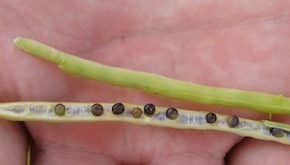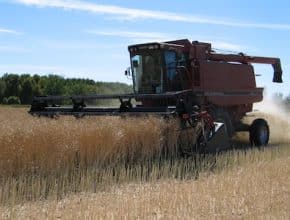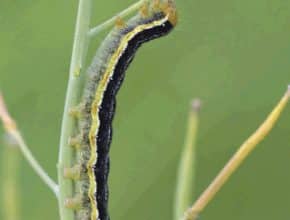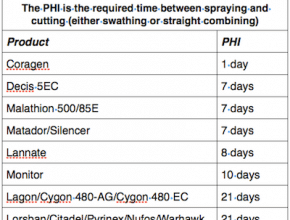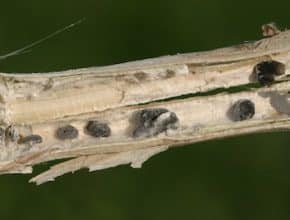Heat has moved the crop along, but resist the temptation to swath too early. The ideal time to swath is when 60% of seeds on the main stem have at least some level of brown colouration. Note that sunscald can make pods look more mature than they really are. We know that not all canola can logistically be swathed at…
August 21, 2013 - Issue 21
-
-
Here are a few of them. Click "Read more" for the rest... 8. Harvest as soon as possible after the seed falls below two percent green content and is dry enough to store. Delayed harvest increases shattering losses. 9. Consider your equipment options and take care to optimize header reel and knife position, speed settings, and anything else that may…
-
The ideal swath timing is when 60% of seeds on the main stem are showing some colour change from green to brown. Colour change is considered any amount of yellowing or browning on the seed. To determine ideal swath timing, fields need to be walked and pods need to be cracked. Pod colour change is not an accurate indicator or…
-
With day time highs in the 30s or high 20s, growers should wait for cooler days before swathing the crop, if possible. Cutting canola in hot conditions will lead to rapid dry down and desiccation, which increases seed shrinkage — and leads to yield loss…
-
Hail damage can cause crops to mature unevenly. Judging when to swath multi-stage crops can be tricky. If the field has distinct late and early parts, the two parts could be swathed at different times. If not, then make the swath decision based on which plants are likely to contribute most to yield…
-
Glyphosate is registered for pre-harvest perennial weed control in canola. Glyphosate is to be applied when the majority of seeds are yellow to brown in colour and seed moisture is less than 30%. Heat fits between glyphosate and Reglone on the speed of dry down spectrum. Reglone is a contact herbicide (only kills what it contacts) and is registered in…
-
-
-
Check those patches of pre-mature ripened canola before or during swathing. Try to identify what cause this pre-mature ripening. Use the Canola Diagnostic Tool at www.canoladiagnostictool.ca to help with the assessment. It could be blackleg, clubroot, sclerotinia, root rot or something else entirely. Growers can use this scouting information to plan rotations, choose varieties, and update fungicide decision-making for next…

